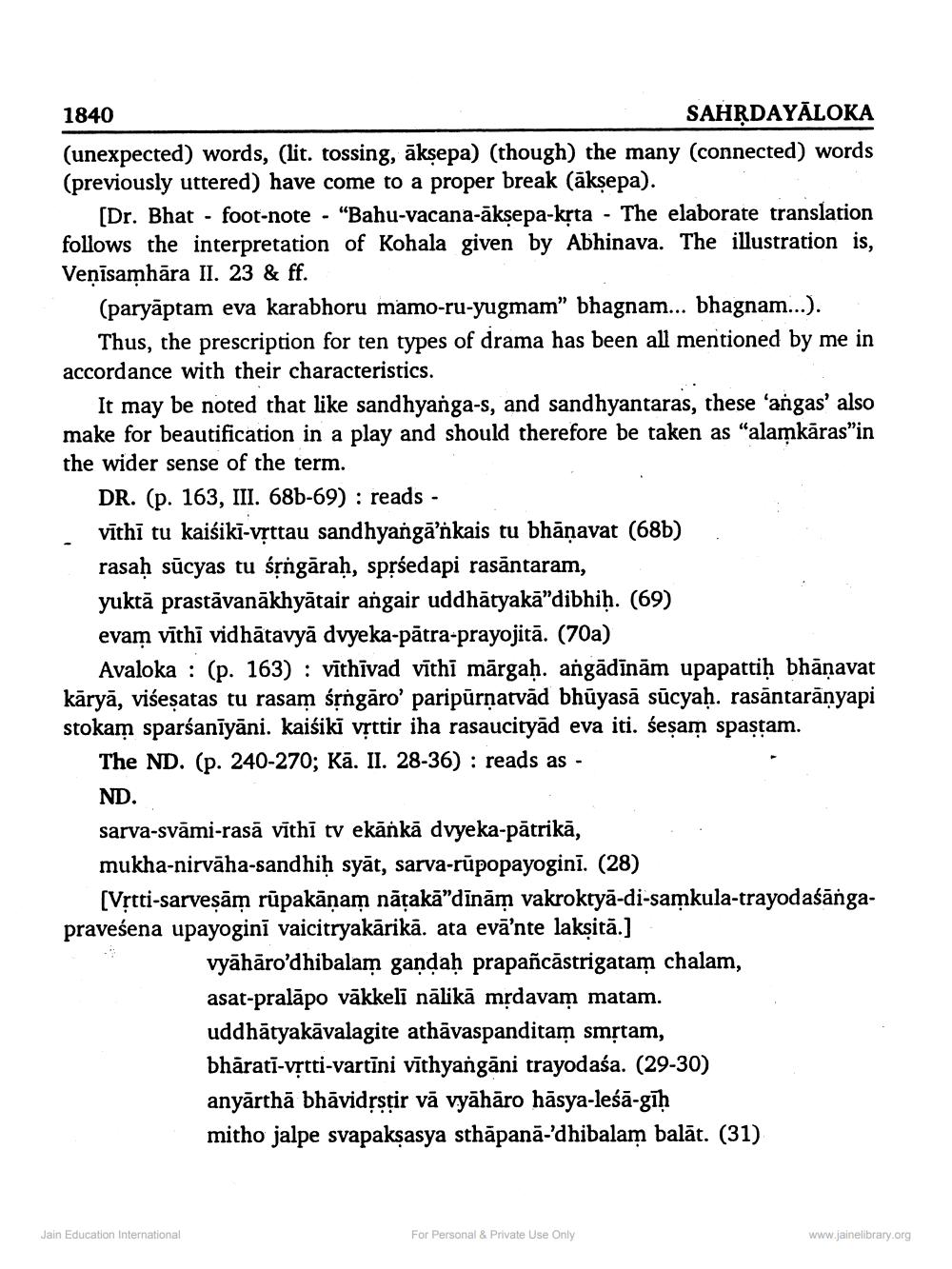________________
1840
SAHRDAYĀLOKA (unexpected) words, (lit. tossing, āksepa) (though) the many (connected) words (previously uttered) have come to a proper break (āksepa).
[Dr. Bhat - foot-note - "Bahu-vacana-āksepa-krta - The elaborate translation follows the interpretation of Kohala given by Abhinava. The illustration is, Venisamhāra II. 23 & ff.
(paryāptam eva karabhoru mamo-ru-yugmam” bhagnam... bhagnam...).
Thus, the prescription for ten types of drama has been all mentioned by me in accordance with their characteristics.
It may be noted that like sandhyanga-s, and sandhyantaras, these ‘angas' also make for beautification in a play and should therefore be taken as "alamkāras”in the wider sense of the term.
DR. (p. 163, III. 686-69) : reads - vīthi tu kaiśikī-vșttau sandhyangā’nkais tu bhāņavat (686) rasaḥ sūcyas tu śộngāraḥ, sprśedapi rasāntaram, yuktā prastāvanākhyātair angair uddhātyakā”dibhiḥ. (69) evam vīthi vidhātavyā dvyeka-pātra-prayojitā. (70a)
Avaloka : (p. 163) : vīthīvad vīthi mārgaḥ. angādīnām upapattiḥ bhāṇavat kāryā, viseșatas tu rasam śrngāro' paripūrņatvād bhūyasā sūcyaḥ. rasāntarānyapi stokam sparśanīyāni. kaisiki vrttir iha rasaucityād eva iti. śesam spastam.
The ND. (p. 240-270; Kā. II. 28-36) : reads as - ND. sarva-svāmi-rasā vīthi tv ekānkā dvyeka-pātrikā, mukha-nirvāha-sandhiḥ syāt, sarva-rūpopayogini. (28)
[Vịtti-sarvesām rūpakāņam nāțakā"dīnām vakroktyā-di-samkula-trayodaśāngapraveśena upayogini vaicitryakārikā. ata evā’nte lakṣitā.]
vyāhāro'dhibalam gandaḥ prapañcāstrigatam chalam, asat-pralăpo vākkeli nālikā mrdavam matam. uddhātyakāvalagite athāvaspanditam smộtam, bhāratī-vștti-vartīni vīthyangāni trayodaśa. (29-30) anyārthā bhāvidssțir vā vyāhāro hāsya-leśā-gīḥ mitho jalpe svapakşasya sthāpanā-'dhibalam balāt. (31)
Jain Education International
For Personal & Private Use Only
www.jainelibrary.org




